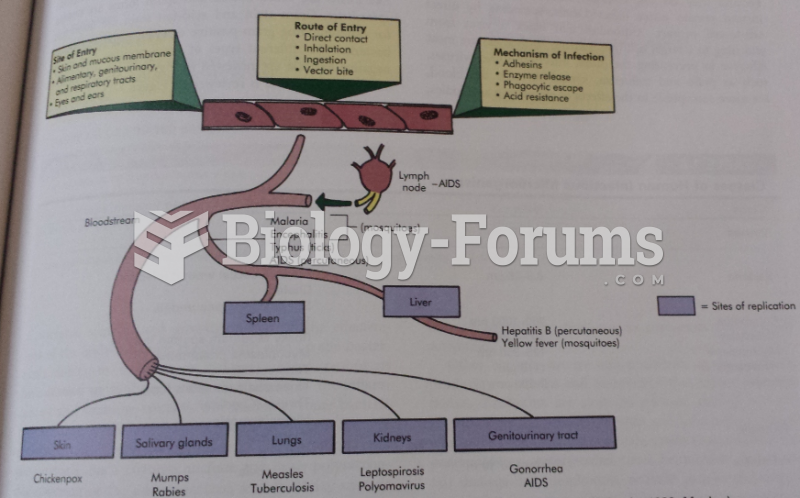Answer to Question 1
Correct Answer: 2,3,4,5
Rationale 1: Several of the major protozoan infections are spread by vectors, organisms that harbor the pathogen and carry it from one host to another. The human body is not considered a vector.
Rationale 2: Several of the major protozoan infections are spread by vectors, organisms that harbor the pathogen and carry it from one host to another. Mites are considered vectors.
Rationale 3: Several of the major protozoan infections are spread by vectors, organisms that harbor the pathogen and carry it from one host to another. Insects are considered vectors.
Rationale 4: Several of the major protozoan infections are spread by vectors, organisms that harbor the pathogen and carry it from one host to another. Ticks are considered vectors.
Rationale 5: Several of the major protozoan infections are spread by vectors, organisms that harbor the pathogen and carry it from one host to another. Dogs are considered a vector.
Global Rationale: Several of the major protozoan infections are spread by vectors, organisms that harbor the pathogen and carry it from one host to another. Some vectors, such as house flies, simply pick up pathogens on their feet and transport them to human food or water. In other cases, the protozoan lives and multiplies inside the insect, which serves as an intermediate host. The protozoan Plasmodium, for example, reproduces in the gut of a mosquito and is transmitted to humans during a mosquito bite, causing malaria. The discovery that mites, ticks, or insects could spread infections was a major advance in medicine because researchers then realized that disease outbreaks could be prevented or controlled by eliminating the vectors. Dogs can also be vectors that harbor disease.
Answer to Question 2
Correct Answer: 2
Rationale 1: Helminths typically do not infest the lungs.
Rationale 2: The most likely site of infection of helminths is the intestine.
Rationale 3: The eyes are not the most likely site of infection of helminths.
Rationale 4: The feet are not the most likely site of infection of helminths.
Global Rationale: Most attach to the intestinal tract, although some form cysts in skeletal muscle or in organs such as the liver. Lungs, eyes, and feet are not the most likely sites of infection of helminths.







